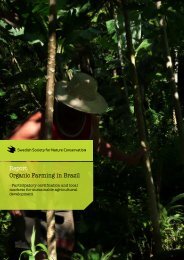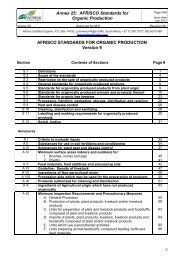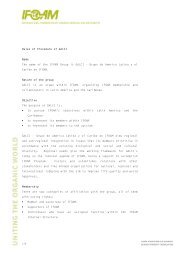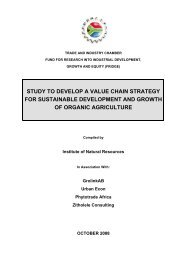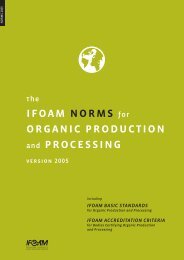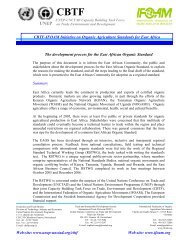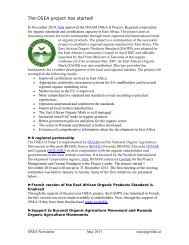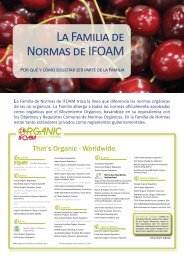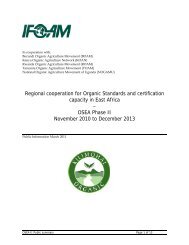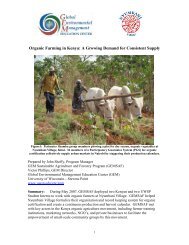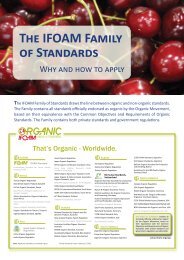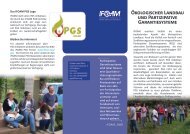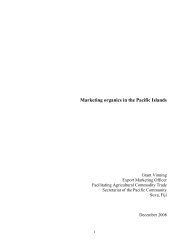OSEA I Project Report - ifoam
OSEA I Project Report - ifoam
OSEA I Project Report - ifoam
You also want an ePaper? Increase the reach of your titles
YUMPU automatically turns print PDFs into web optimized ePapers that Google loves.
DEVELOPMENT OF A REGIONAL ORGANIC AGRICULTURE STANDARD IN EAST AFRICA 2005-2007<br />
ACRONYMS AND TERMS USED<br />
ACRONYMS<br />
CBTF Capacity Building Task Force on Trade, Environment and Development<br />
EAC East African Community<br />
EAOM East African Organic Mark<br />
EAOPS EAS 456, East African Organic Products Standard<br />
EPOPA Export Promotion of Organic Products from Africa<br />
ICS internal control systems (see explanation below)<br />
IFOAM International Federation of Organic Agriculture Movements<br />
ITC International Trade Center, Geneva<br />
KEBS Kenya Bureau of Standards<br />
KOAN Kenya Organic Agriculture Network<br />
NOAM National Organic Agriculture Movement (KOAN, NOGAMU and TOAM in<br />
the context of this report)<br />
NOGAMU National Organic Agriculture Movement of Uganda<br />
<strong>OSEA</strong> Organic Standards in East Africa<br />
PGS participatory guarantee system (see explanation below)<br />
RSTWG Regional Standards Technical Working Group<br />
Sida Swedish International Development Cooperation Agency<br />
TOAM Tanzania Organic Agriculture Movement<br />
TERMS<br />
Group certification and internal control systems: Group certification is a concept developed<br />
over the last 10 to 15 years to allow producers to organize themselves in groups with an internal<br />
control system, which is then subject to certification by an external body.<br />
Participatory guarantee systems: Participatory guarantee systems (PGS) are systems for certification<br />
that emphasize the participation of stakeholders, including producers. Participatory<br />
guarantee systems share a common goal with third-party certification systems in providing a<br />
credible guarantee for consumers seeking organic produce. The difference is in approach. As the<br />
name suggests, direct participation of farmers and even consumers in the certification process<br />
is not only encouraged but may be required. Active participation on the part of the stakeholders<br />
results in greater empowerment but also greater responsibility.<br />
5



